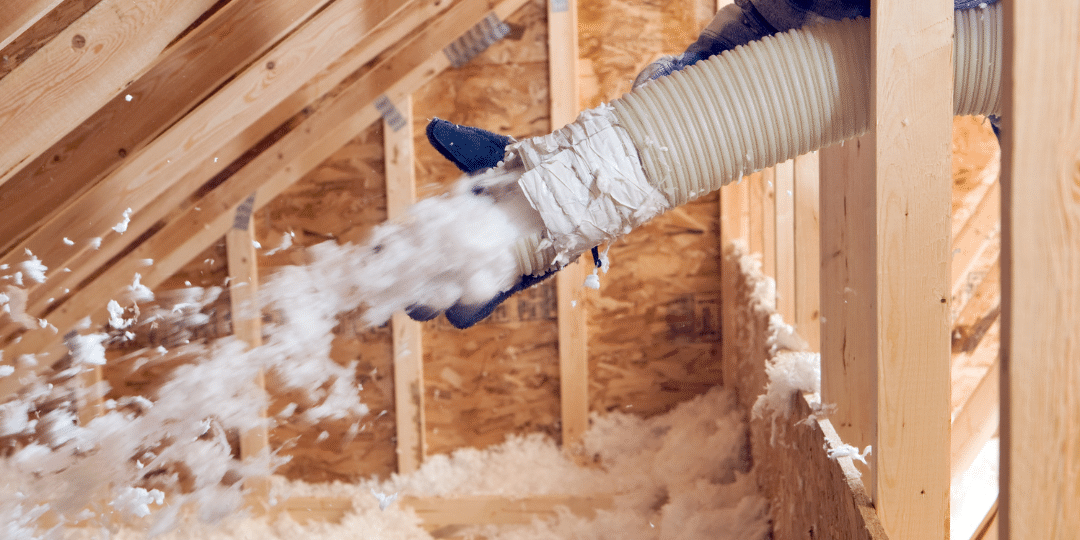Search “blown-in insulation near me” or “attic insulation Loveland CO” and you’ll see plenty of options—but not all contractors provide the same insight into this critical home improvement. To ensure your attic insulation investment delivers optimal energy conservation, comfort, and durability, it’s essential to ask these key questions during the estimate.
Why Attic Insulation Matters for Your Building Envelope
An insulated attic plays a vital role in the building envelope, reducing heat transfer and improving indoor air quality. In the winter, your attic acts as a dam, preventing warm air from escaping through the roof and ceiling, and in warm months it stays cooler, reducing your air conditioning load.
Without adequate insulation—such as blown-in fiberglass, cellulose, or mineral wool—and effective air sealing, issues like condensation, ice damming, and climbing energy costs become inevitable. Plus, poor insulation accelerates wear on your HVAC system and contributes to humidity and moisture problems.
5 Must-Ask Questions During Your Attic Insulation Estimate
1. What Type of Insulation Do You Recommend—and Why?
Contractors should explain pros and cons of:
- Blown-in fiberglass or cellulose insulation (good coverage, cost-effective, ideal for attics)
- Spray foam insulation (excellent air barrier, high R-value per inch)
- Batt insulation (glass wool or polystyrene panels)
- Radiant barriers for high-reflectance building materials
Ask about R-values such as R‑38 or R‑49 and whether the insulation addresses thermal bridging, knee walls, and duct spaces. Also discuss vapor barrier needs, especially if vermiculite is present.
2. Will You Perform Air Sealing Before Installing Insulation?
Even the best insulation underperforms if attic air leakage persists around plumbing vents, recessed lighting, HVAC, attic hatch, or electrical wiring penetrations. Contractors should use caulk, sealant, weatherstripping, or spray foam to stop air leaks and improve energy efficiency.
3. How Will You Address Ventilation and Moisture?
Proper ventilation (soffit and ridge vents) prevents condensation, mold, and rot. Ask if your attic ventilation will be improved or inspected. Without this, adding insulation may trap moisture, causing long-term water damage to wood and drywall.
4. What’s Included: Removal, Cleanup, Breakdown of Costs?
A comprehensive estimate should detail whether it includes:
- Removal of old insulation materials like fiberglass or vermiculite
- Inspection for mold, ice dam risk, or damaged framing
- Cleanup of insulation debris
- A full breakdown of material and labor costs
Avoid contractors offering a quick quote—they often overlook issues like loose attic insulation, attic hatch leaks, or failed ventilation.
5. What Warranties and Energy Savings Can I Expect?
Ask about:
- Manufacturer coverage for materials like Owens Corning, cellulose, or polystyrene
- Contractor workmanship warranties
- Expected energy savings (verified with a blower door test, energy audit, or references)
- Compliance with building codes and United States Department of Energy standards
Why Expertise Matters
Attic insulation is not just retail insulation installation—it’s a blend of building science, attention to heat transfer, and understanding of materials like fiberglass insulation, foam insulation, and radiant barrier systems. A qualified contractor will evaluate:
- Roof slope and attic structure
- Knee wall insulation
- Electrical wiring layout
- Potential thermal bridges at wall and ceiling intersections
They’ll also recommend improvements to plumbing vent seals, ensure duct integrity, and suggest updates to insulation near attic hatch or attic flooring.
Trust Insulation Pros of Colorado
At Insulation Pros of Colorado, we specialize in attic insulation tailored to Northern Colorado’s climate. Our certified team offers:
- Blown-in fiberglass and cellulose insulation
- Spray foam insulation for air sealing and thermal efficiency
- Quality batt insulation and radiant barriers
- Comprehensive air sealing of attic penetrations, hatches, and ductwork
- Diagnosis of ventilation issues and moisture control
- Free energy audits and blower door tests
- Project estimates aligned with building codes
Call (970) 980-6455 or submit our online form for a free estimate. Let us optimize your energy performance and comfort from the attic down.
FAQ: Attic Insulation Estimates
Q1. How much insulation do I need in the attic?
Ans: Loveland, CO homes typically benefit from R‑49 to R‑60 attic insulation—around 14–20 inches of blown-in fiberglass, cellulose, or equivalent.
Q2. Is spray foam insulation better than fiberglass?
Ans: Spray foam provides a superior air barrier and higher R-value per inch. While more costly, it offers long-term savings and moisture resistance unmatched by fiberglass.
Q3. What’s the cost of blown-in insulation?
Ans: Blown-in fiberglass or cellulose averages $1.50–$2.50 per square foot, including removal of old insulation. Precise pricing depends on attic size, accessibility, and insulate-in depth.
Q4. Can attic insulation help prevent ice dams?
Ans: Proper insulation combined with air sealing and ventilation helps maintain roof temperatures above freezing, reducing the risk of ice damming.
Q5. How long does attic insulation take to install?
Ans: Most standard attics (≈1,000–1,500 sq ft) can be insulated in a day. Projects involving removal, venting upgrades, or weatherproofing may take 1–2 days.
Q6. Is blown-in insulation safe around electrical wiring and plumbing?
Ans: when installed by professionals. We take care to avoid covering junction boxes, light fixtures, or plumbing vent pipes, and ensure insulation is a safe distance from heat sources.




